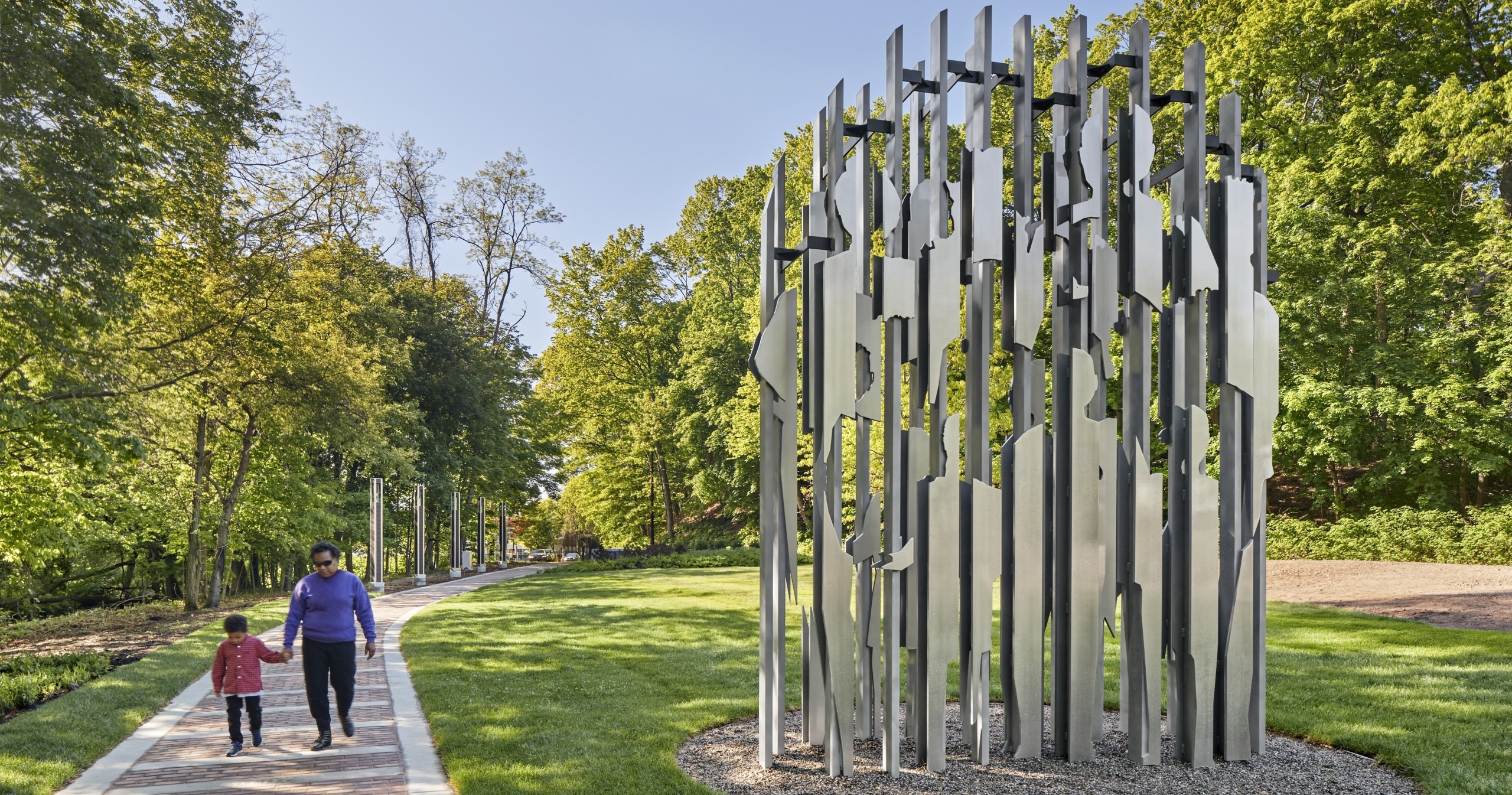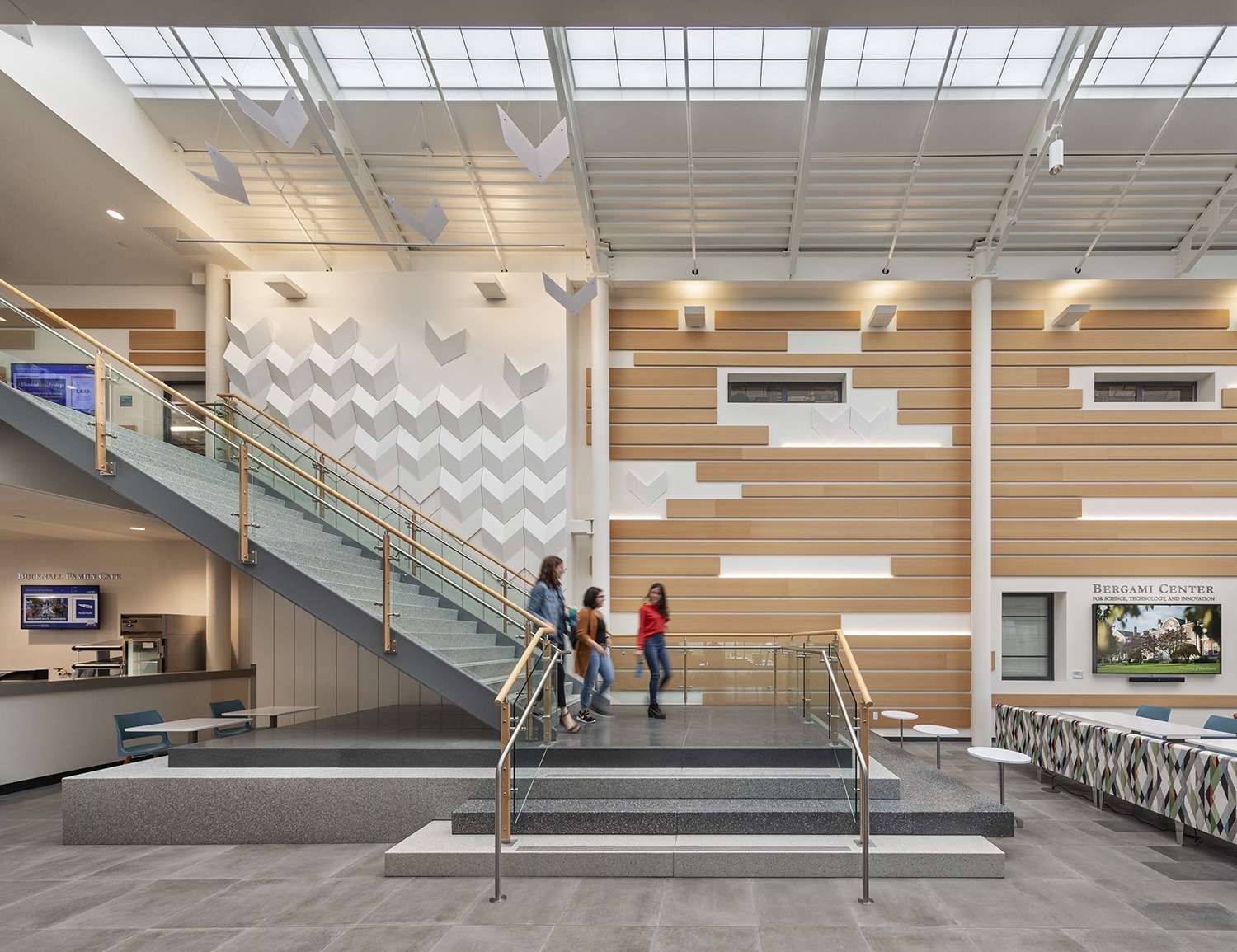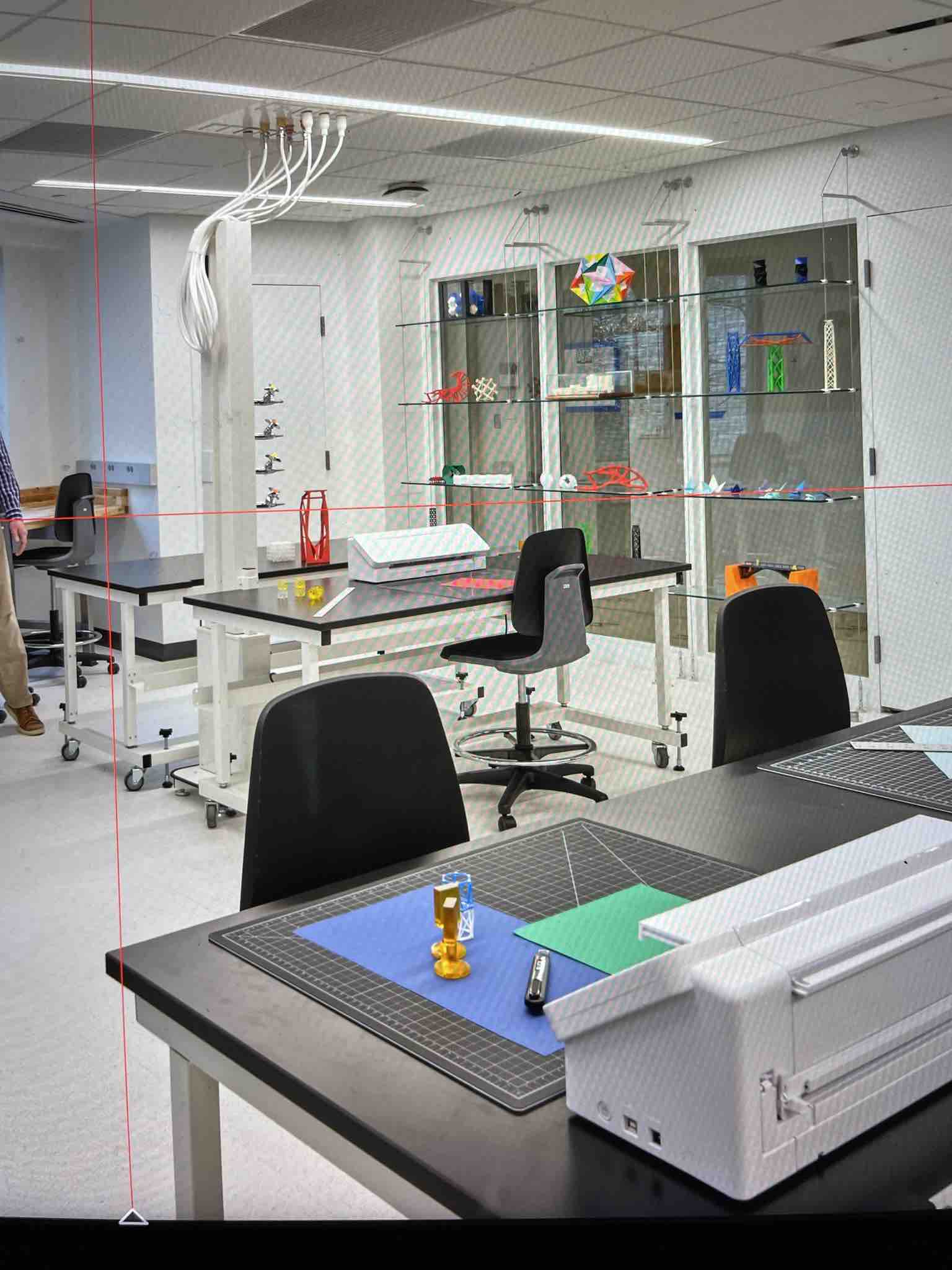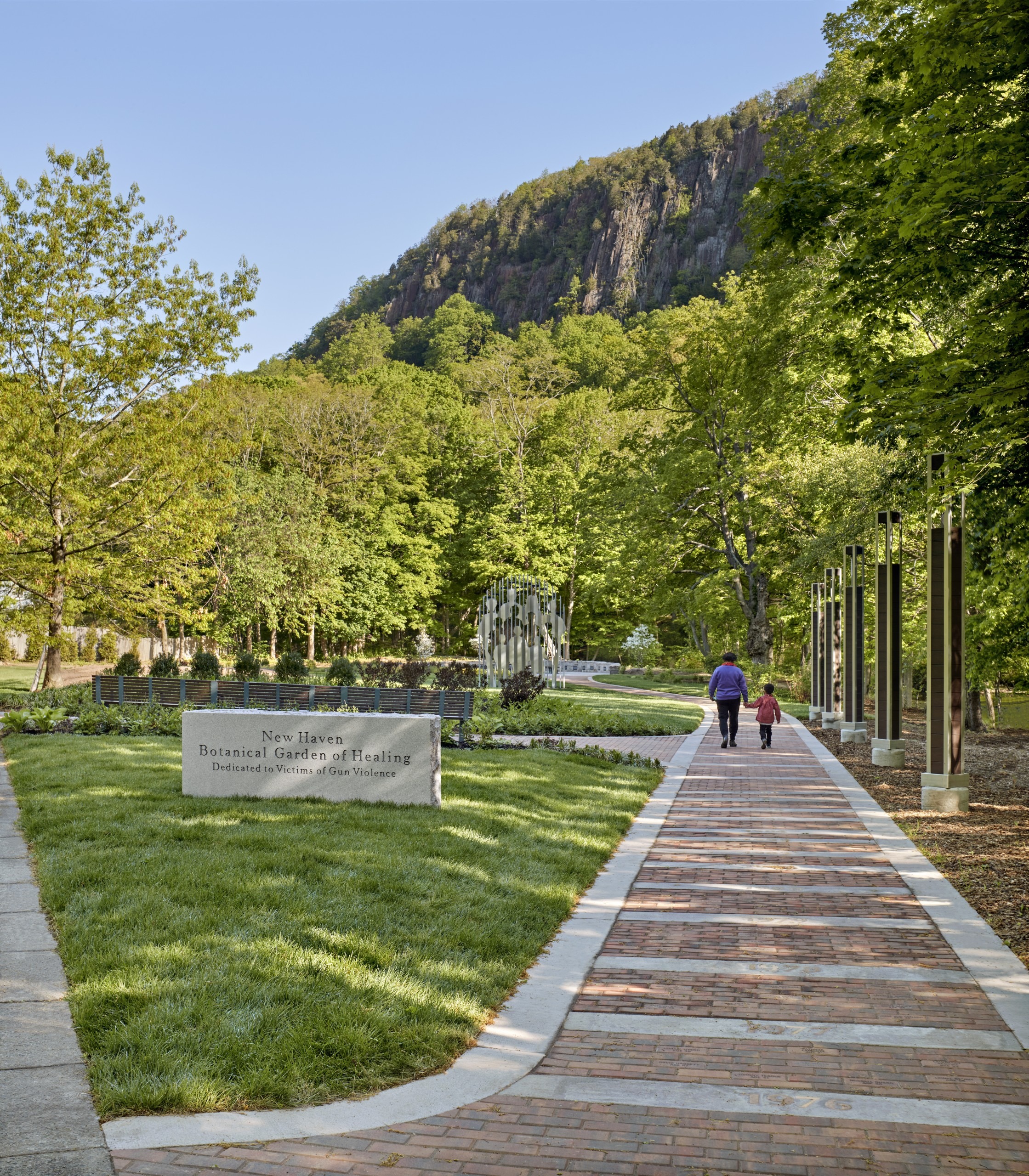Marissa Mead is director of art integration at Svigals + Partners, a New Haven-based firm founded in 1983 by sculptor and architect Barry Svigals.
He’s now partner emeritus, but the philosophy on which he founded the firm still stands. “He traveled and studied sculpture in France and wanted the firm to integrate sculpture and architecture,” Mead says. “It was a different approach.”
Mead earned a degree in architecture from Notre Dame in the early 2000s, with a concentration in furniture design and sculpture. Miingling these three interests has played out in an influential way within the firm. But she comes at her clients’ work as an architect, not a fine artist.
“I’m not self-expressive – I look at it as integrating these art elements as a way to expand humanity and improve lives,” she says. “Ultimately it’s what people are drawn to and want.”
The firm works with Yale University on a number of projects, including health and laboratory spaces. There’s a good flow of educational and academic work for the New Haven Public School System, and a lot of K-12 work.
But then there’s the nearly pure sculptural work, like a bridge in New Britain, Conn. “I worked on the Beehive Bridge, and my role evolved into any of our architecture projects,” she says. “Then Barry retired and that role became important.”
She was strongly engaged with the New Haven Botanical Garden, for a memorial to children lost to gun violence. Mead was involved early on, talking to as many people about its mission as possible.
There was a group of mothers – Marlene Pratt, Celeste Robinson Fulcher and Pam Jaynez – whose children had been victims. There was a branch of the Yale School of the Environment, and the City of New Haven, which provided a site for the project.
“There were essential conversations with the folks who would experience the site or visit it, to get as much input as possible,” she says. “Then there was an interactive design process to play it back and get feedback – and then came the process for final feedback.”
The chosen landscape is punctuated with a 700-foot-tall outcropping of reddish volcanic stone that soars skyward from the west side of New Haven. “It’s a grassy site, and then you look up at this rocky space that’s really tall,” she says.
The firm’s sculpture activates the site, guiding visitors through it, and how they experience it. “You come in to see this sculpture and then it dissolves, which represents how families were destroyed. As you get closer, you see a grouping of figures that represent the strength we have when we work together.”
It’s called “Lost Generation,” a tribute to mothers who’ve lost children to gun violence. “It’s about those children and future children,” she says. “It’s based on stories we heard and our experience and perspective of the site.”
At 15 feet, it’s larger than life, and sculpted in aluminum. That, she says, was the best choice because of the scale of the outcropping, and for the metal’s reflective properties. Stone pavers and planted beds minimize intrusion on the landscape.
“Its layered elements are aligned,” she says. “As you move around, the image of the figures is unrecognizable, and then as you approach it, it’s visible again.”
Tuesday’s shooting at a Virginia high school graduation is a tragic reminder of why memorials like this are needed – until these killings stop.
For more, go here.










